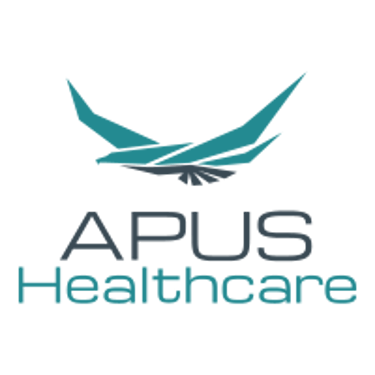Global Landscape of FDA/NMPA/CE/PMDA-Approved Alzheimer’s Diagnostics
A Deep Dive into Technologies, Market Dynamics, and Future Trends


Executive Summary
The Alzheimer’s disease (AD) diagnostics market is undergoing a seismic shift—from invasive, high-cost confirmatory tests (PET, CSF) to scalable, blood-based screening tools. With regulatory approvals accelerating across the U.S. (FDA), China (NMPA), EU (CE), and Japan (PMDA), this report dissects the competitive landscape, clinical adoption barriers, and future winners in a market projected to exceed $12B by 2030.
I. Regulatory Approvals & Key Players
1. U.S. FDA-Cleared Diagnostics
a) Lecanemab (Eisai/Biogen) – The First Disease-Modifying Therapy (DMT) Companion Diagnostic
Approval Pathway: Accelerated approval (2023) based on Clarity AD trial (27% slowing of cognitive decline in early AD).
Biomarker Requirement: Requires Aβ PET or CSF confirmation before treatment.
Adoption Hurdles:
High cost ($26,500/year), limited Medicare coverage.
ARIA (amyloid-related imaging abnormalities) in 13% of patients.
2024 Sales: $480M (below consensus due to diagnostic bottlenecks).
b) PrecivityAD2 (C2N Diagnostics) – The Blood Test Disruptor
Technology: Plasma p-tau217 + Aβ42/40 ratio (90% concordance with PET).
Pricing & Volume: $500/test, ~300K tests annually (2024).
Strategic Edge: Positioned for primary care screening, but reimbursement remains a challenge.
2. China NMPA-Approved Tests
a) Roche Elecsys CSF Assays (Aβ42, p-tau, t-tau)
Market Position: Gold standard in tertiary hospitals (90% vs. PET accuracy).
Adoption: ¥3,000-5,000/test, ~100K annual tests (2024).
Barrier: Lumbar puncture reluctance limits scalability.
b) Mike Bio GFAP/NfL Serum Panel
Innovation: First low-cost (¥800) serum test for AD risk stratification.
Limitation: 78.8% sensitivity—needs refinement for standalone use.
3. EU CE-Marked Tests
a) Quanterix Simoa p-tau217
Breakthrough: Single-molecule detection (fg/mL sensitivity).
Use Case: Clinical trial enrollment & therapy monitoring (€1,200/test).
b) Roche Elecsys CSF (EU Version)
Volume Leader: 500K tests/year in Europe, driven by memory clinics.
4. Japan PMDA-Approved Tests
a) Lecanemab (Eisai)
Pricing: ¥5M/year (~$35K), constrained by NHI coverage delays.
b) Sysmex HISCL Aβ42/40 Assay
Niche: Research labs, ¥20,000/test, low clinical penetration.
II. Head-to-Head Comparison
Metric CSF (Roche) Blood (PrecivityAD2) PET (Tauvid) Genetic (APOE4)
Accuracy 90% vs. PET 85-90% 95% 60-70% (risk only)
Cost $500−1,000 $300−500 $5,000+ $100−200
Invasiveness High (LP) Minimal Moderate (IV) None
Volume (2024) 1.5M 3M (2025E) 500K 2M
Key Insight: Blood tests are displacing CSF/PET in screening, but confirmatory testing remains PET/CSF-dependent.
III. Future Outlook: The 2030 Battleground
1. Blood-Based Biomarkers Will Dominate Early Screening
Winning Signature: p-tau217 + GFAP + Aβ42/40 (AUC >0.95).
Market Shift: 60% of tests will be blood-based by 2030 (vs. 30% today).
2. Digital/AI Integration for Risk Stratification
Examples:
Roche’s Navify Cognigram (AI-driven CSF/blood data fusion).
Altoida’s VR cognitive testing paired with plasma biomarkers.
3. Reimbursement Wars in the U.S. & China
U.S.: CMS must expand coverage for blood tests (currently only PET/CSF).
China: NMPA fast-tracking low-cost assays for rural screening.
4. Next-Gen Technologies
CRISPR-based detection (e.g., Sherlock Biosciences).
Exosome-bound tau assays (higher specificity than plasma-free markers).
IV. Strategic Recommendations
For Diagnostics Companies:
✅ Focus on blood-based multi-marker panels (p-tau217 + GFAP + Aβ).
✅ Partner with DMT developers (e.g., Lecanemab requires Aβ confirmation).
✅ Invest in AI/clinical decision support to enhance test utility.
For Payers & Regulators:
✅ Expand Medicare/CMS coverage for blood tests to reduce PET/CSF bottlenecks.
✅ Harmonize global AD diagnostic guidelines (currently fragmented).
For Pharma/Biotech:
✅ Embed biomarkers in clinical trials to accelerate patient recruitment.
✅ Co-develop DMTs with companion diagnostics (e.g., anti-tau drugs + p-tau217 tests).
Conclusion: The Road to a $12B Market
The AD diagnostics industry is at an inflection point: blood tests will democratize access, but PET/CSF retains confirmatory dominance. Winners will be those who:
Optimize cost-accuracy trade-offs (blood > CSF > PET).
Secure reimbursement early (CMS/NHI/NMPA alignment critical).
Integrate with digital health/AI to enhance clinical utility.
Final Thought: The era of "detect-to-prevent" is here—companies that bridge diagnostics and therapeutics will capture the most value.
